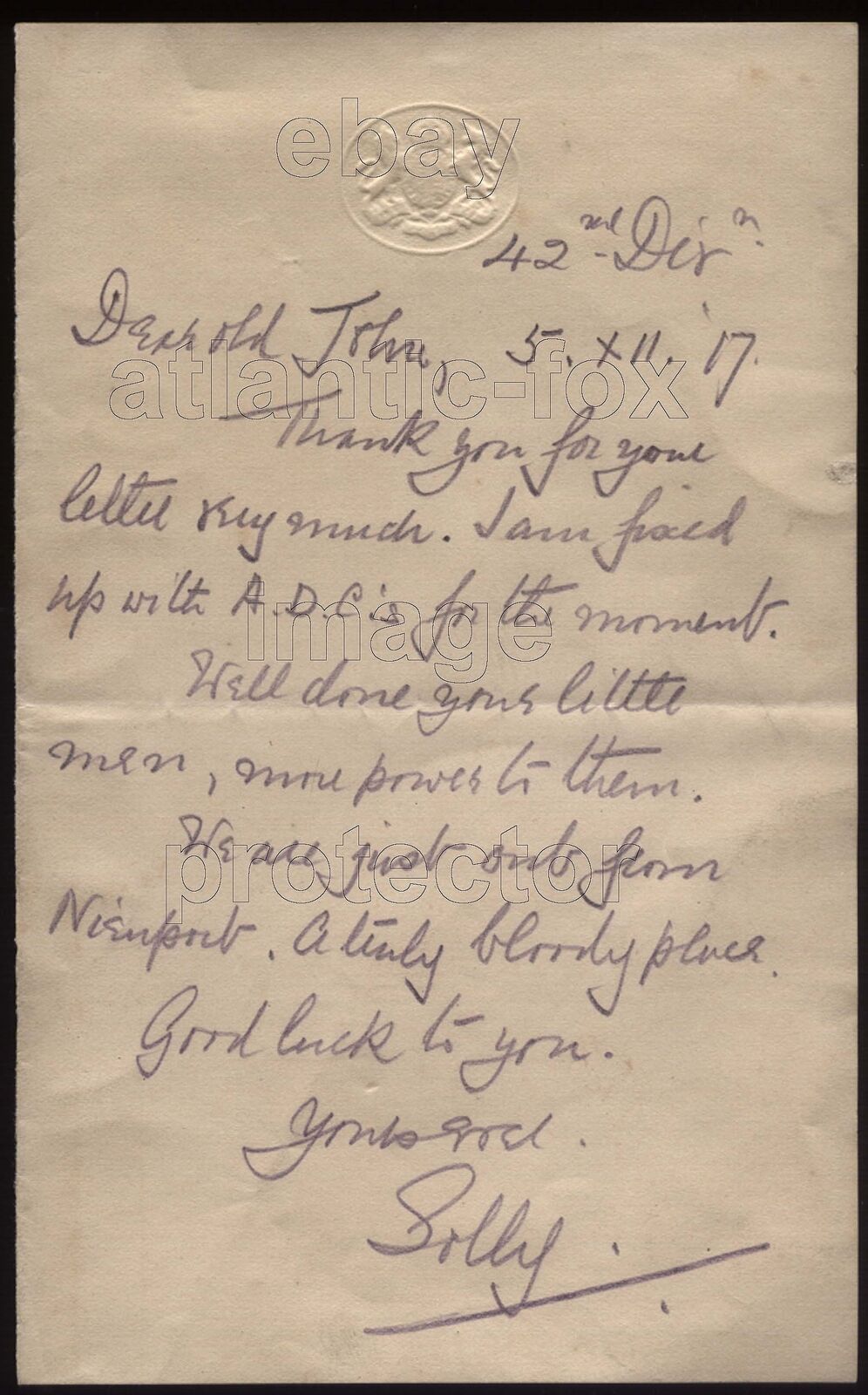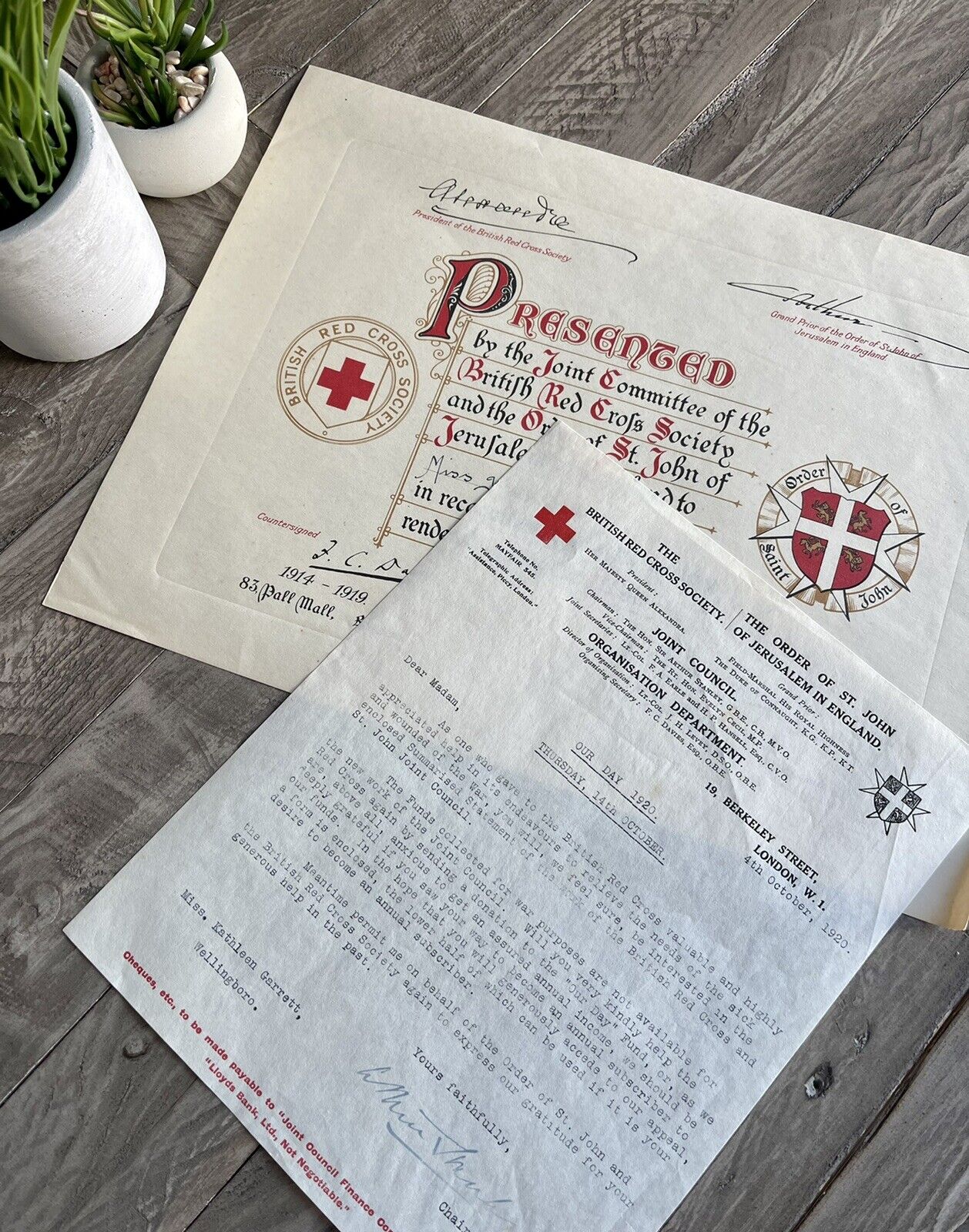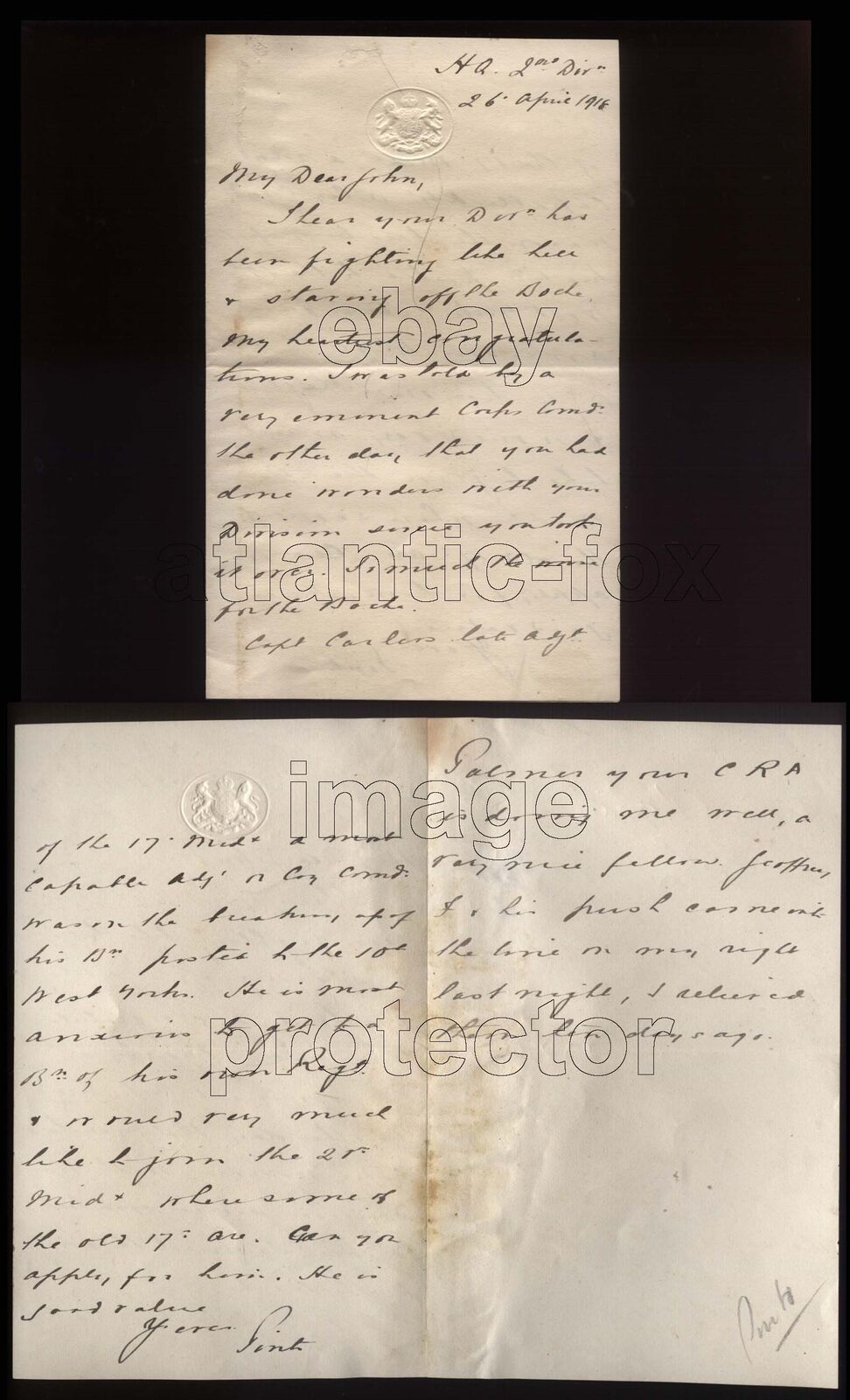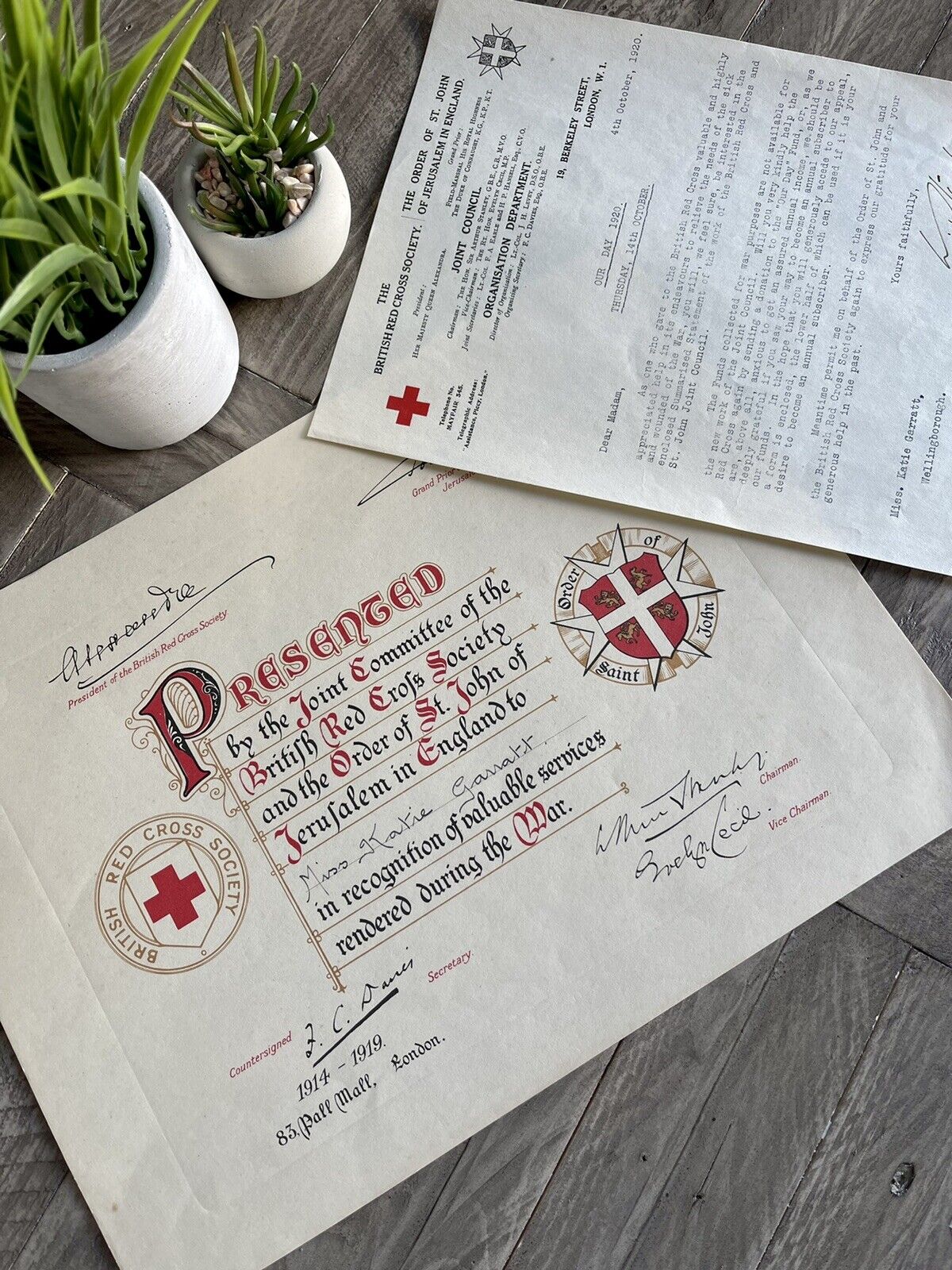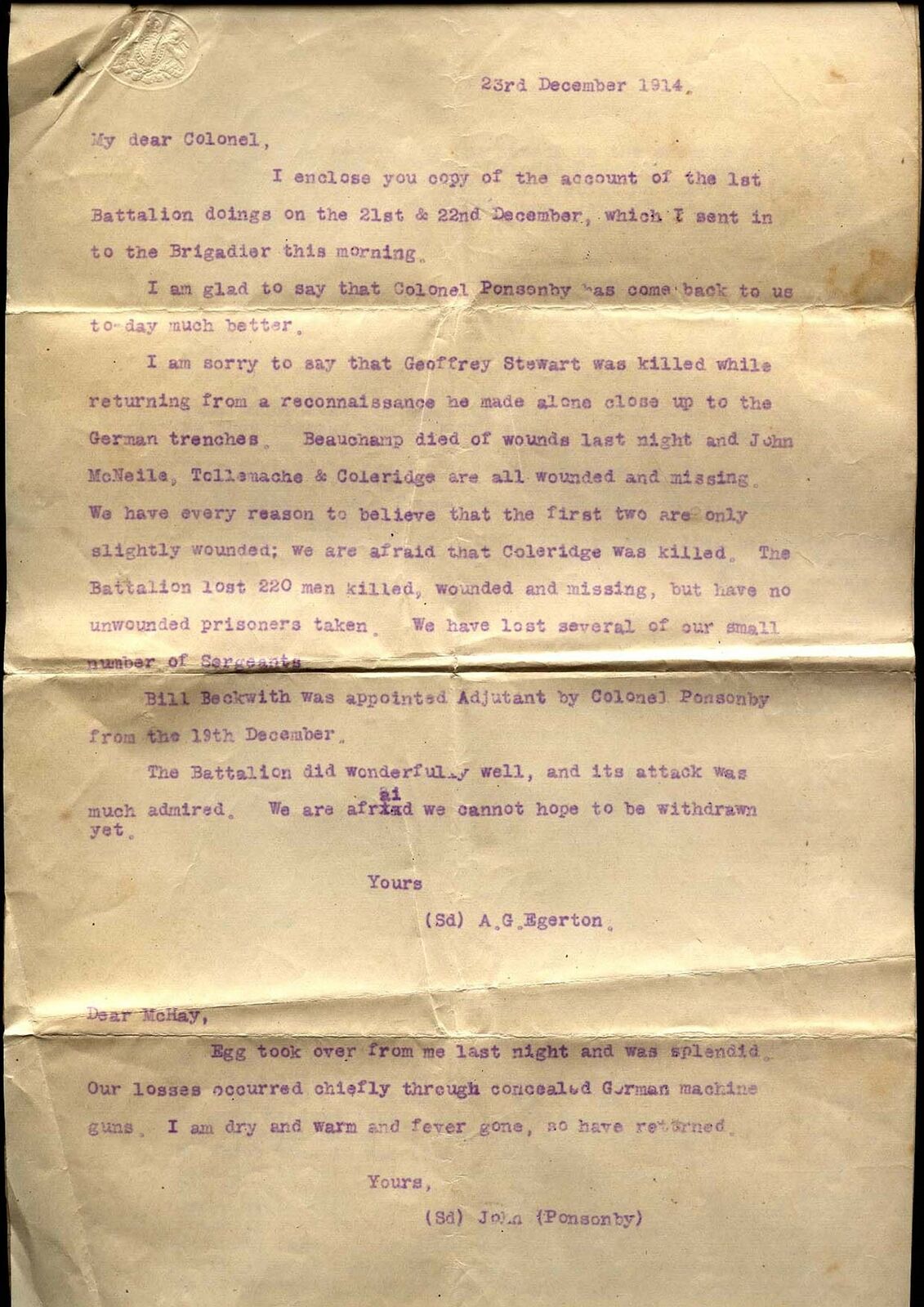-40%
1917 Major-General ARTHUR SOLLY-FLOOD, 42ND DIVISION, 5th Dec, NIEUPORT
$ 152.56
- Description
- Size Guide
Description
1917 Major-General ARTHUR SOLLY-FLOOD, 42ND DIVISION, 5th Dec, NIEUPORTThis product data sheet is originally written in English.
1917 Major-General ARTHUR SOLLY-FLOOD, 42ND DIVISION, Fine original letter 5th Dec, NIEUPORT to Major General John Ponsonby, regarding A.D.C.'s and "We are just out from Nieuport, a truly bloody place"
Major-General Arthur Solly-Flood CB, CMG, DSO (28 January 1871 − December 1940) was a British Army officer.
Military career
He was appointed a Companion of the Order of the Bath in the 1919 New Year Honours.
He was colonel of the 4th/7th Dragoon Guards from 1930 to 1940.
Western Front - 42nd Division
The division moved to France and joined 3 Corps in the Fourth Army in March 1917. It relieved 48th (South Midland) Division on 8 May 1917[44] and held the line at Épehy before relieving 20th (Light) Division and holding the line at Havrincourt, north of Epéhy, from 23 May 1917. Its infantry was relieved by 58th (2/1st London) Division on 8 July 1917 but its divisional artillery remained in the line in support of 58th and then 9th (Scottish) Division at Havrincourt Wood. It moved to the Ytres sector on 9 July 1917.
On 23 August 1917, it joined 5 Corps in the Fifth Army, although the infantry in Poperinghe area behind Ypres for training. Its divisional artillery entered line immediately in support of 15th (Scottish) Division near Potijze Chateau. Its infantry relieved 15th Division in the line to the right of Potijze Road near Frezenberg Ridge at Ypres on 1 September 1917 and on 6 September 125 Brigade made an unsuccessful attempt to capture the fortified Iberian, Borry and Beck Farms during the Third Battle of Ypres.
The divisional infantry were relieved by the 9th Division and retired to Poperinghe area on 18 September 1917. Its divisional artillery remained in the Line until 29 September, participated in heavy fighting from 20 September and advanced to exposed positions on Frezenberg Ridge on 25 September during the Battle of the Menin Road Ridge. The divisional artillery rejoined and it held the line at Nieuport.
On 29 November 1917 it relieved the 25th Division and held the line at Givenchy on La Bassée sector. It constructed fortifications according to the new British defensive doctrine of "defended localities" in anticipation of major German attack. Private Walter Mills of C Company, the 1/10th Manchesters, was posthumously awarded the Victoria Cross for actions at Red Dragon Crater, Givenchy on the night of 10 December 1917.
Fresh to the Market Place, from Major-General Sir John Ponsonby's Collection
For more from this collection see our shop category for SIR HENRY & JOHN PONSONBY COLLECTION
John Ponsonby (British Army officer)From Wikipedia, the free encyclopedia
Major-General Sir John Ponsonby KCB CMG DSO (25 March 1866 – 26 March 1952) was a British Army officer who commanded 5th Division during World War I
Born the son of Sir Henry Ponsonby (Queen Victoria's Private Secretary), his Mother Hon. Mary Elizabeth Ponsonby, Maid of Honour to Queen Victoria and a daughter of John Crocker Bulteel.
His brothers were Frederick Ponsonby, ( Assistant Private Secretary to Edward VII & GV), and Arthur Augustus William Harry Ponsonby, 1st Baron Ponsonby of Shulbrede, (British politician, writer, and social activist).
His Two Sisters were Alberta Victoria Ponsonby (6 May 1862 – 15 October 1945) and Magdalen Ponsonby (24 June 1864 – 1 July 1934) Author
Sir John was educated at Eton College, He was gazetted to the Royal Irish Rifles 16 November 1887, and to the Coldstream Guards 15 August 1888, becoming Lieutenant 29 June 1891. He was ADC to the Governor and Commander-in-Chief, South Africa, 10 August 1891 to 30 January 1895; served in operations in Matabeleland (Medal); was promoted to Captain 7 September 1898, and in that year served in Uganda (Medal), and again in 1899, during the operations against Kabarega (clasp). Captain Ponsonby served in the South African War, 1899-1902, on special service with the Rhodesian Field Force, 19 February 1900 to 7 July 1901. He was Adjutant, 5th New Zealand Regiment, 8 June 1900 to 1 January 1901; afterwards in command 1 January to 18 January 1901. From February to May 1900, be was employed with Mounted Infantry, and he took part in operations in the Transvaal, west of Pretoria, from July to 29 November 1900; operations in the Transvaal, February to June 1901; operations in Cape Colony, February to 31 May 1902. He was mentioned in Despatches [London Gazette, 10 September 1901]; received the Queen's Medal with four clasps, the King's Medal with two clasps, and was created a Companion of the Distinguished Service Order [London Gazette, 27 September 1901]: "John Ponsonby, Captain, Coldstream Guards. In recognition of services during the operations in South Africa". The Insignia were presented by the King 27 October 1901. He was promoted to Major 23 January 1904, and commanded the Guards' Depot 1 March 1905 to 28 February 1907. He became Lieutenant Colonel 28 October 1913.
Lieutenant Colonel Ponsonby served in the European War, 1914—18; Landed in France 13th August 1914 in charge of 1st Coldstream Guards,Wounded 15th September & returned to unit 21st November. commanded the 2nd Guards Brigade, BEF, 26 August 1915 to 19 November 1916: was given the Brevet of Colonel 1 January 1916; commanded the Special Reserve Infantry Brigade 28 November 1916 to 7 March 1917; commanded the 21st Infantry Brigade, BEF, 8 March to 20 March 1917; became Colonel 20 March 1917; commanded the 2nd Guards Brigade, British Armies in France, 21 March to 21 August 1917; commanded the 40th Division, British Armies in France, 22 August 1917 to 3 July 1918; subsequently commanded the 5th Division, British Armies in France, 4 July 1918 to 1 April 1919; was promoted to Major General 1 January 1919. He was mentioned in Despatches; created a CMG in 1915, a CB in 1918, and was given the Brevet of Colonel.
He went on to become General Officer Commanding 5th Division remaining in that role until the end of the War. After the War he became General Officer Commanding the Madras District of India. He retired in 1928.
He lived at Haile Hall near Beckermet in Cumbria
:
Powered by SixBit's eCommerce Solution
1917 Major-General ARTHUR SOLLY-FLOOD, 42ND DIVISION, Fine original letter 5th Dec, NIEUPORT to Major General John Ponsonby, regarding A.D.C.'s and "We are just out from Nieuport, a truly bloody place"Major-General Arthur Solly-Flood CB, CMG, DSO (28 January 1871 − December 1940) was a British Army officer.Military career He was appointed a Companion of the Order of the Bath in the 1919 New Year Honours.He was colonel of the 4th/7th Dragoon Guards from 1930 to 1940. Western Front - 42nd Division The division moved to France and joined 3 Corps in the Fourth Army in March 1917. It relieved 48th (South Midland) Division on 8 May 1917[44] and held the line at Épehy before relieving 20th (Light) Division and holding the line at Havrincourt, north of Epéhy, from 23 May 1917. Its infantry was re
Country/ Organization
Great Britain
Letter From
Major-General ARTHUR SOLLY-FLOOD
Service
Army
EAN
Does Not apply
Country
Belgium
City/Town/Village/Place
Nieuport
Year of Issue
1917
Theme
Militaria
Era
1914-1945
Addressed to
Major-General Sir John Ponsonby
Officers Name
Solly-Flood
Theme 2
Western Front
Issued/ Not-Issued
Issued
Document Type
Original Manuscript Letter
Continent
Europe
Conflict
World War I (1914-1918)
